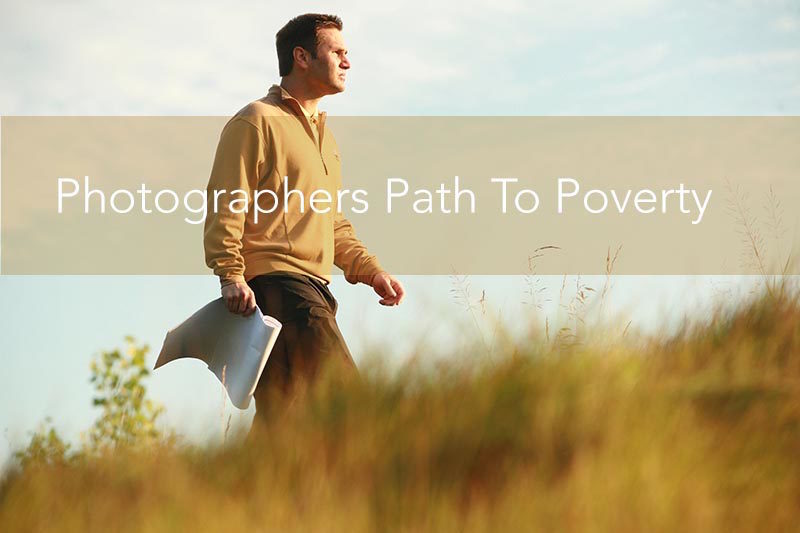
![]()
You open the box and there it is; a new digital camera. You’ve wanted to be a professional photographer for a long time and now is your time. This camera is the symbol of your next step.
Or maybe it’s your new lens which takes you to your promising future of photographic glory. We all have a piece of equipment that represents our entry into the professional world of photography. It gives you the confidence to stand tall and say, I’m a professional.
I’m not knocking this moment. It’s important. Confidence in yourself and your work is a big part of selling your photography to the marketplace. You find new clients, yet, for some reason, you still struggle.
Unfortunately, awesome equipment doesn’t make your photography business successful.
When I started photographing professionally I charged $50 an hour. Later I raised my hourly rate about $5-10 per year until I hit $125 an hour. Eventually, I offered 1/2 and full day rates. I did this until an important moment in my photography career. During an ASMP meeting, I heard a friend talk about per-image pricing. She mentioned how important it is in the digital age. This was a time when we were all trying to figure out digital. Many photographers quit during the transition from film to digital. It was a confusing time.
Since the days of the digital revolution, the rate of new photographers entering the market is dramatic. Unfortunately, most have no clue how to run a profitable photography business. Many fail quickly, yet, the market remains saturated. They focus on equipment, software and downloading the latest pre-set. All are helpful support tools, however, they are not the key to grow a profitable photography business.
In the film days, hourly and day rates were the gold standard in photography pricing, yet, they don’t work well then either. I thought about this idea and realized; unless I’m photographing an event, someone always loses with day rates. Unless I work exactly 60 minutes, someone is cheated. It clicked, working hourly in the digital age is the path to poverty. Today, digital photography takes a fraction of the time to create the money or hero image. Unfortunately, it takes multiple hours of post-production, which most photographers don’t charge for, to get the job done.
With this new enlightening information I began to experiment, I began with my architectural and interior work. I charged $175 for the first image and $125 for each additional. It wasn’t long before I noticed an increase in my overall revenue. Rather than making $500 for a half day of photography, I earned $1250. Today, if I break it down, it’s not uncommon for me to make $1000 per hour on average.
I learned to teach the value of each image to my clients. I took the time out of my pricing presentation. A presentation which successfully became part of my marketing story. Time is still valuable and I use it to figure my cost of doing business. However, time is not part of my pricing story to the client.
I share with my client that the risk is now on me. If I don’t do a good job, you don’t have to buy my photographs. This makes me a low risk option for the photography buyer. Obviously, for some assignments, I have fixed expenses such as location fees, travel and models. I charge separately for outside expenses. The client understands the value of each image and if I do a good job, they often buy more photographs. Win-win.
Pricing systems which penalize the creator for efficiency is how even busy professionals stay poor. I found myself very busy in the early years, yet, I still had trouble paying the rent.
Once, I had a prospect ask me how I could get away with charging $50 an hour for my services. Wouldn’t $5 – 10 (at the time) be more reasonable? Obviously, he came from a 40 hour a week perspective. Most photographers don’t photograph 40 hours per week. So, we must charge enough to cover our costs of doing business, which are higher than most photographers realize.
Working hourly doesn’t scale. There are many ways to approach pricing. Once you find the one which works for you, it’s like that new piece of equipment. You have confidence when you approach a client because you have a win-win story behind your pricing which supports your client and feeds your family.
About the author: Rosh Sillars is a commercial, advertising, magazine and corporate photographer based in Detroit, Michigan. He’s also a blogger, author of 4 books, podcaster, speaker, university instructor, and dad. You can find more of his work and writing on his website and blog. This article was also published here.

